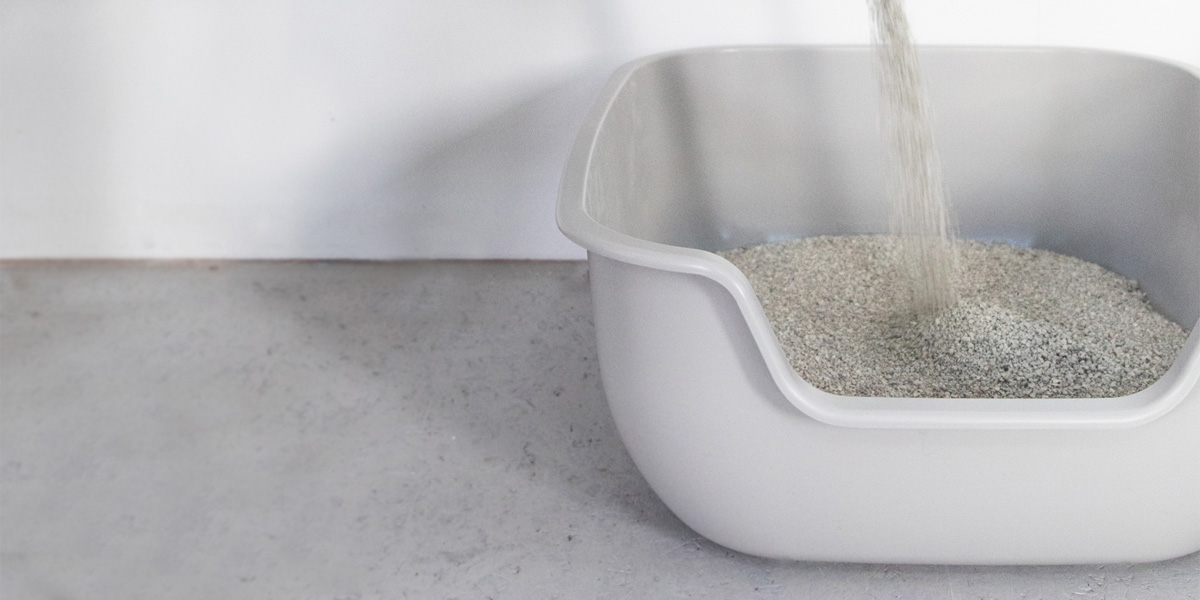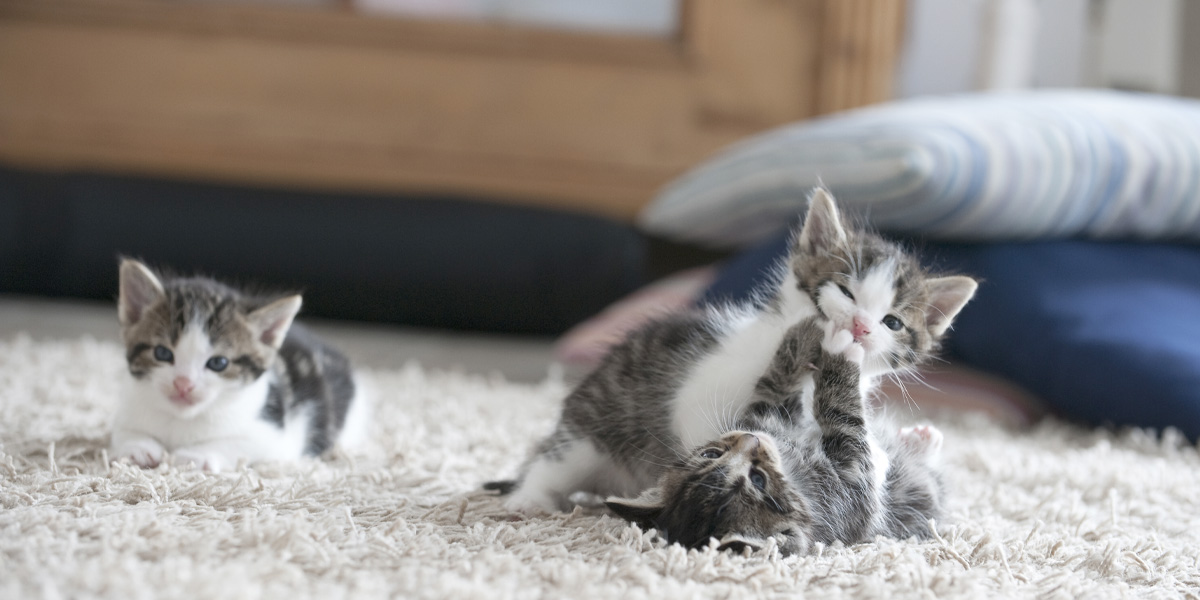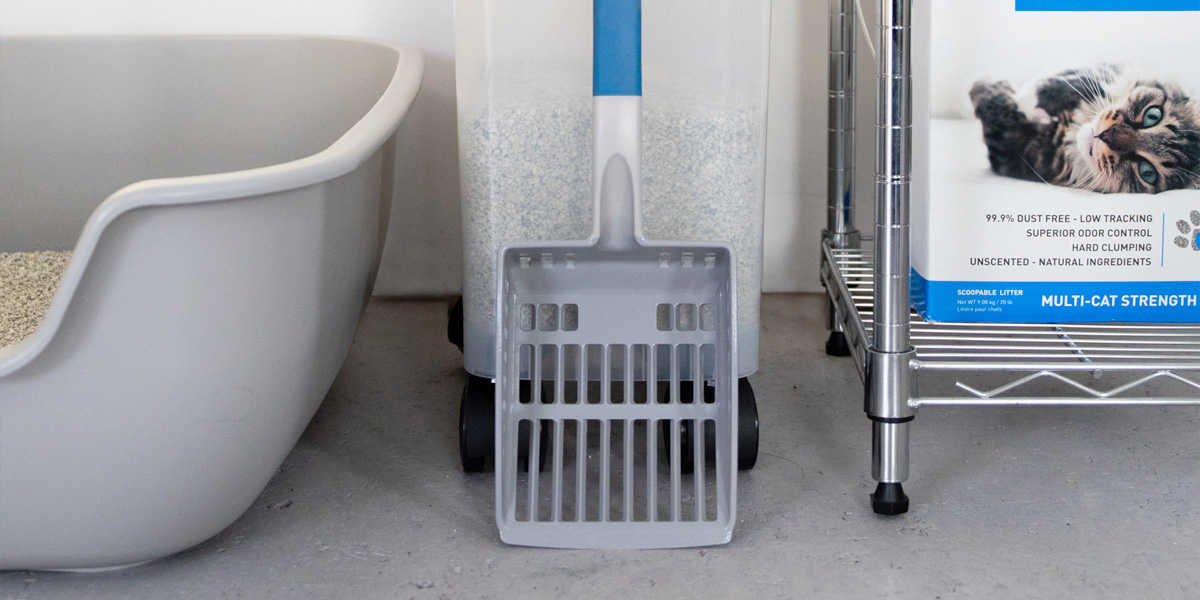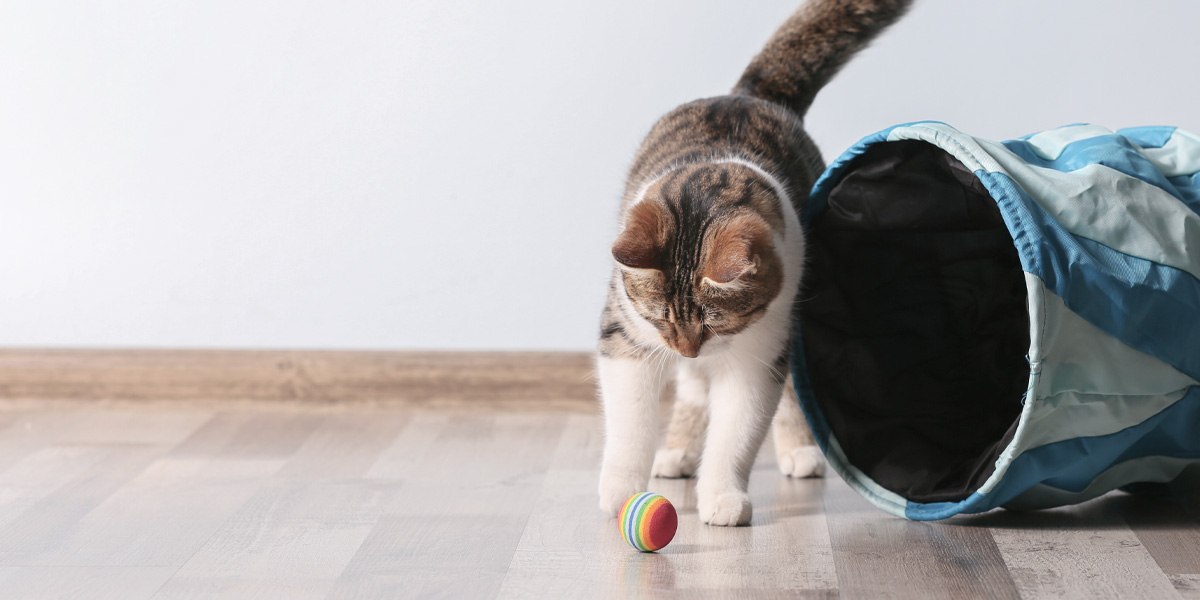
5 Litter Tips
5 Tips for Litter Box Success
Does this sound familiar to you? A finicky feline who won’t go in the litter box. While inappropriate elimination can be a challenge to pet ownership, poor litter box behavior should never be the reason to give up on your cat. Follow our five-step program to help solve your litter box usage issues:

1. Clean up your litter box.
We recommend replacing litter boxes every 6 to 12 months to promote a healthy habit for your cat. Litter boxes can become scratched and permeated with urine odor, even when washing them, so it is good to change out boxes on a regular basis.
Remove feces and urine clumps a couple of times a day from the box and wash your box thoroughly with a mild soap and hot water, as needed. Don’t use any harsh chemicals to clean out your box—cats do not like the smell and this may discourage them from using the box.

2. Clean up all old odors so your cat will not have a tendency to go back and use those areas again.
For stains on the carpet, we recommend a three-step program beginning with cleaning the area with a mixture of mild dish detergent and water. Saturate the area with this solution and let it sit for an hour or two before blotting the area with tap water to rinse. Do not rub your carpet as to preserve the natural carpet texture. Next, soak the area with club soda for ten minutes and then blot with fresh paper towels. Weigh down the paper towels with a heavy object and let dry overnight. The next day, apply Dr. Elsey’s Urine Removal Program. Mix the Urine Removal Program one part solution to seven parts distilled water. Saturate the area with the mixture and allow the solution to remain in the carpet to dry.
If you do not remove all the urine odor, there will be a tendency for your cat to continue to urinate in those same areas over and over again, so cleaning up old urine odors is essential for getting a cat to go back to their litter box again.

3. Replace your current litter with Dr. Elsey’s Cat Attract®.
Cat Attract® was designed with a natural herbal attractant to draw cats to the litter box by smell. Known as the problem-cat training litter, Cat Attract® is the most trusted solution, preferred by cat owners everywhere.

4. Carefully choose the type of litter box and where it is located, as both elements can be the key to getting your cat back to using the box again.
We recommend not using boxes with hoods as they trap odors and cats may feel confined and refuse to use it. Large, open litter boxes or storage boxes are best. Your cat should be able to effortlessly step in and out of the box and move with ease while inside. Remember that senior cats can have litter box issues simply because it is difficult for them to step in and out of the box if the sides are too high.
Location of the litter box is important as well. Don’t place your cat’s litter box in a loud laundry room or cold basement. Placing the box in a warm, dry and quiet place is key. We recommend one box per cat plus one, and if you have a multi-level home, placing one box on each level of your house.

5. Stress is a major factor in a cat not using the litter box.
Try to find out what might be causing your cat’s stress and minimize it. A good way to reduce stress is through enrichment. Play with your cat at least 15 minutes a day to increase endorphins and promote better sleep. Provide perches and cat poles so your cat can see outside as it provides a getaway spot from other cats in the household. If you have multiple cats, make sure you zone their litter boxes and food bowls providing separate areas for each of your cats. This will help with territory problems if they should arise.
For further reading, you can find a Dr. Elsey’s Litter Box Solutions booklet in every bag of Cat Attract® litter. Explore all of Dr. Elsey’s litter products to find the right solution for your cat!




